Links to external sources may no longer work as intended. The content may not represent the latest thinking in this area or the Society’s current position on the topic.
Rising methane: is warming feeding warming?
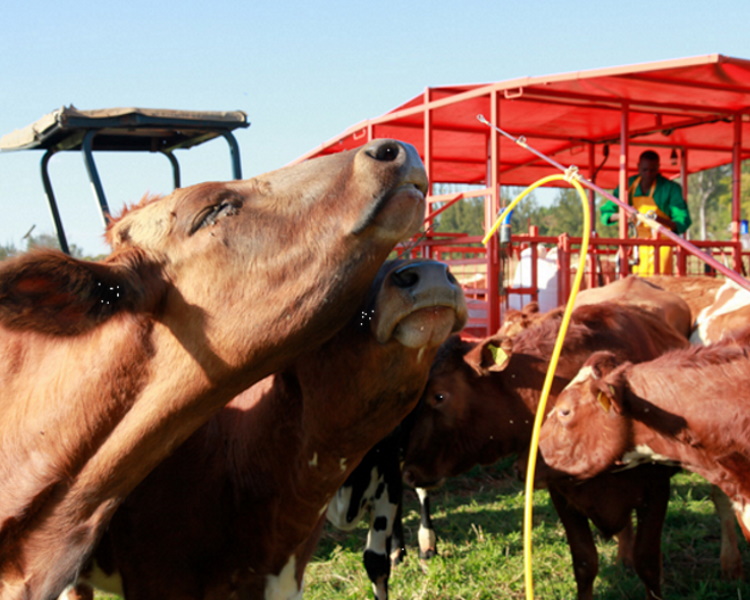
Scientific discussion meeting organised by Professor Euan Nisbet, Professor Ute Skiba, Dr Anna Jones and Professor John Pyle FRS.
Atmospheric methane is rising rapidly. The rise is making it more difficult to reach the goals of the 2015 Paris Agreement. But the reasons for methane’s growth and concurrent isotopic shift are unclear: sources may be increasing, sinks may be declining, or both processes taking place. Is this a climate change impact? Is the warming feeding the warming?
The schedule of talks and speaker biographies and abstracts are available below. Accompanying journal issues have been published in Philosophical Transactions of the Royal Society A: part 1 and part 2.
Attending the event
This meeting has taken place. Watch all of the recordings on our YouTube channel.
Enquiries: contact the Scientific Programmes team
Organisers
Schedule
Chair
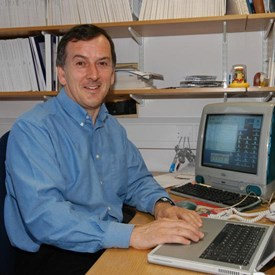
Professor John Pyle CBE FRS, University of Cambridge, UK

Professor John Pyle CBE FRS, University of Cambridge, UK
John Pyle has made major contributions to our understanding of the chemistry of the stratosphere and the troposphere, both by numerical modelling of the atmosphere and by interpretation of atmospheric measurements. In the 1970s, he developed the first interactive two-dimensional model of stratospheric chemistry and transport. This enabled him to be the first person to demonstrate that ozone depletion by chlorofluorocarbons (CFCs) varies with latitude. He pioneered the analysis of satellite data for dynamical and chemical studies, for instance by testing chemical steady state relationships there and elucidating the role of the semi-annual oscillation in controlling the abundance of trace species. Since the mid-1990s, he has been in the forefront of the development of three-dimensional models incorporating chemical and transport properties. His group is the largest in Europe and a world leader scientifically. This work has demonstrated unequivocally that chemical destruction of ozone in the Arctic spring has increased during the 1990s and has shed new light on the processes which destroy ozone in mid latitudes.
| 11:55 - 12:00 | Welcome by the Royal Society and Professor Euan Nisbet |
|---|---|
| 12:00 - 12:25 |
Global atmospheric methane models: a sensitivity analysis
Recent variation in the global trend of atmospheric methane is yet to be explained, despite a multitude of top-down inversion studies. These studies have proposed a variety of different drivers of the global trend of atmospheric methane, such as wetlands, ruminants, fossil fuels, biomass burning, and the methane sink. This variation is despite all studies using a similar set of observations, demonstrating there is still work to be done regarding the atmospheric simulations, inversion framework, and uncertainty quantification. This talk discusses these key issues with the help of Gaussian Process emulators (a type of machine learning) which efficiently approximate the response of atmospheric-methane mole fraction and δ13C–CH4 to changes in uncertain emission and loss parameters in a three-dimensional global chemical transport model. The emulator analysis provides an overview of the sensitivity of atmospheric observations to budget uncertainties, and examines how we can best improve our knowledge of the methane budget. 
Dr Angharad Stell, University of Bristol, UK

Dr Angharad Stell, University of Bristol, UKDr Angharad Stell is a post-doctoral researcher in the Atmospheric Chemistry Research Group at the University of Bristol. She conducted her PhD research, using Gaussian Process emulation to quantify the global methane budget, in the same research group, and continues to work on global modelling of atmospheric gases. Her research interests include a range of atmospheric science problems, mainly based on inferring global greenhouse gas emissions from atmospheric observations as well as the tools used to help do this. For example, the use of isotopic observational data (δ13C–CH4 and δD–CH4), and the development of global atmospheric inversion frameworks. |
| 12:25 - 12:35 | Discussion |
| 12:35 - 13:00 |
Extreme weather in Europe 2018 – a natural experiment to examine the effect on methane emissions
The effect of the 2018 extreme meteorological conditions in Europe on methane (CH4) emissions is examined using estimates from four atmospheric inversions calculated for the period 2005–2018. For most of Europe, no anomaly was found in 2018 compared to the 2005–2018 mean. However, a positive anomaly was found for the Netherlands in spring, which coincided with positive temperature and soil moisture anomalies suggesting an increase in biogenic sources. In contrast, a small negative anomaly was found for the Netherlands in October, which coincided with a negative anomaly in soil moisture, suggesting a decrease in soil sources. In addition, a positive anomaly was found for Serbia in spring, summer and autumn, which coincided with increases in temperature and soil moisture, again suggestive of changes in biogenic sources, and the annual emission for 2018 was 36% higher than the 2005–2017 mean. These results indicate that CH4 emissions from areas where the natural source is thought to be relatively small can still vary due to meteorological conditions. However, the degree of variability over 2005–2018 was small and there was negligible impact on the annual European CH4 emissions in 2018 despite the extreme meteorological conditions. 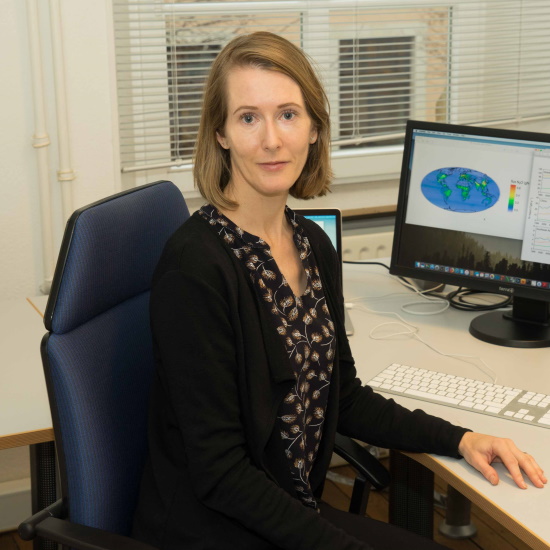
Dr Rona Thompson, Norwegian Institute for Air Research, Norway

Dr Rona Thompson, Norwegian Institute for Air Research, NorwayDr Rona Thompson completed her PhD in atmospheric chemistry from Victoria University of Wellington, New Zealand in 2005. Following this, she held post-doctoral positions at the Max Planck Institute for Biogeochemistry in Germany and at the Laboratoire des Sciences du Climat et de l’Environnement in France. Since 2011, Dr Thompson has held a senior scientist position at the Norwegian Institute of Air Research in Norway. Her research is focused on the use of atmospheric transport models and data assimilation to improve understanding of the processes determining the atmospheric composition of greenhouse gases and other species. Dr Thompson is active in European and Norwegian research projects and was a contributing author to the IPCC 5th and 6th Assessment Reports. |
| 13:00 - 13:10 | Discussion |
| 13:10 - 13:35 |
The satellite view
In recent years the spatial resolution of methane sensors onboard Earth orbiting satellites has strongly improved. This has consequences not only for the spatial coverage of the data in presence of clouds, but also for the capacity to resolve local sources of methane. Close to strong local methane sources, the enhancements in column average mixing ratio are large, facilitating detection by instruments that trade off spatial resolution and measurement accuracy. At these scales, if local sources are strong enough, the high spectral resolution that is common in atmospheric remote sensing is not even strictly necessary anymore. This has been demonstrated by the use of lower spectral resolution instruments for land surface mapping such as Sentinel 2 and even Landsat. This development has shifted the focus from large scale to small scale applications of satellite data, improving its capacity to attribute detected mixing ratio enhancements to specific emission processes. This presentation provides a brief overview of the changing capabilities of satellites, the techniques that are used, and the implications for global methane emission monitoring and its use in support of climate mitigation. 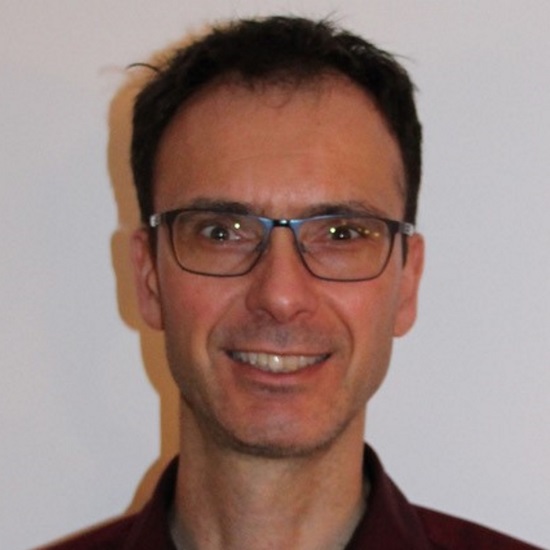
Professor Sander Houweling, Vrije Universiteit and SRON Netherlands Institute for Space Research, The Netherlands

Professor Sander Houweling, Vrije Universiteit and SRON Netherlands Institute for Space Research, The NetherlandsSander Houweling has been a professor in atmosphere, greenhouse gases and climate at the Vrije Universiteit Amsterdam, Department of Earth Science since 2017. He is an expert in long-lived greenhouse gases, focusing mostly on methane and carbon dioxide, and the use atmospheric inverse modelling techniques for quantifying their sources and sinks from atmospheric data. A specific research interest is to investigate the use of data from Earth orbiting satellites in collaboration with SRON Netherlands institute of Space Research, co-PI of the S5p TROPOMI satellite mission. Besides existing missions, Sander Houweling also supports the development of future instrumentation, focusing on scales ranging from local to global. To cover this wide range of scales, atmospheric transport and chemistry models are developed within his group addressing varying spatial resolutions and domain sizes. |
| 13:35 - 13:45 | Discussion |
| 13:45 - 14:00 | Break |
Chair

Professor John Pyle CBE FRS, University of Cambridge, UK

Professor John Pyle CBE FRS, University of Cambridge, UK
John Pyle has made major contributions to our understanding of the chemistry of the stratosphere and the troposphere, both by numerical modelling of the atmosphere and by interpretation of atmospheric measurements. In the 1970s, he developed the first interactive two-dimensional model of stratospheric chemistry and transport. This enabled him to be the first person to demonstrate that ozone depletion by chlorofluorocarbons (CFCs) varies with latitude. He pioneered the analysis of satellite data for dynamical and chemical studies, for instance by testing chemical steady state relationships there and elucidating the role of the semi-annual oscillation in controlling the abundance of trace species. Since the mid-1990s, he has been in the forefront of the development of three-dimensional models incorporating chemical and transport properties. His group is the largest in Europe and a world leader scientifically. This work has demonstrated unequivocally that chemical destruction of ozone in the Arctic spring has increased during the 1990s and has shed new light on the processes which destroy ozone in mid latitudes.
| 14:00 - 14:25 |
Time-varying constraints on atmospheric hydroxyl derived from methyl chloroform observations
Atmospheric measurements of CH3CCl3 have provided important constraints on hemispheric- to global-scale mean hydroxyl radical concentrations ([OH]) and their changes over time. Constraints on [OH] add to our understanding of changes in the global methane mole fraction because the main loss of atmospheric methane is by hydroxyl radical oxidation. Atmospheric emissions and mole fractions of CH3CCl3 have declined over the past 20 years by factors of 100 or more, thus affecting the accuracy and precision of derived global [OH]. Here this talk explores the time-dependencies of measurement precision, network limitations, and emission uncertainties from 1998 to 2020, and will assess their influence on estimates of [OH] variability and trends. The results, derived from analyses of surface and aircraft observations, suggest that the period from 1998 to 2015–2017 was optimal for constraining [OH] from the analysis of CH3CCl3 measurements because of the reduced influence of emissions. Subsequently, however, continued observations reveal a growing influence of poorly constrained emissions. Given the uncertain origin of these residual emission and limitations on independent methods for estimating emission magnitudes, constraints on [OH] as derived from CH3CCl3 observations have become much less certain since 2017. 
Dr Stephen Montzka, National Oceanic and Atmospheric Administration, USA

Dr Stephen Montzka, National Oceanic and Atmospheric Administration, USADr Steve Montzka has worked as a research chemist at the NOAA’s Global Monitoring Laboratory for most of his 30-year career. He now leads the division within the Laboratory that makes ongoing measurements of over 40 chemicals from flask-air samples collected at sites around the world. The chemicals measured include greenhouse gases, ozone-depleting gases, and hazardous air pollutants, and the results from this effort have enabled key insights into the workings of the atmosphere and the natural and human processes affecting the atmospheric environment. While these findings are documented in over 200 peer-reviewed publications, he also has led numerous chapters in national and international scientific assessment reports focused on ozone-depletion and climate change, and he particularly enjoys directly communicating these results to national and international policymakers. |
|---|---|
| 14:25 - 14:35 | Discussion |
| 14:35 - 15:00 |
Observational constraints on the global methane budget
Atmospheric CH4 is arguably the most interesting of the anthropogenically-influenced, long-lived greenhouse gases. It has a diverse suite of sources, each presenting its own challenges in quantifying emissions, and while its main sink, atmospheric oxidation initiated by reaction with hydroxyl radical (OH), is well-known, determining the magnitude and trend in this and other smaller sinks remains challenging. This talk provides an overview of the state of knowledge of the dynamic atmospheric CH4 budget of sources and sinks determined from measurements of CH4 and δ13CCH4 in air samples collected predominantly at background air sampling sites. While nearly 4 decades of direct measurements provide a strong foundation of understanding, large uncertainties in some aspects of the global CH4 budget still remain. More complete understanding of the global CH4 budget requires significantly more observations, not just of CH4 itself, but other parameters to better constrain key, but still uncertain, processes like wetlands and sinks. 
Dr Xin Lan, National Oceanic and Atmospheric Administration, Global Monitoring Laboratory and University of Colorado Boulder, USA

Dr Xin Lan, National Oceanic and Atmospheric Administration, Global Monitoring Laboratory and University of Colorado Boulder, USADr Lan is a research scientist working in NOAA Global Monitoring Laboratory and University of Colorado Boulder. She focuses on research of atmospheric CO2 and CH4 on regional and global scales to better understand their sources and sinks. Her work includes time series analyses of long-term atmospheric measurements of CO2 and CH4 and their stable carbon isotopes for trends, interannual variability and seasonal cycles, and uses this information in 3D tracer transport models to improve our understanding of CO2 and CH4 budgets. She also supports NOAA/GML’s Cooperative Global Air Sampling Network to ensure high data quality and compares in situ observations with satellite retrievals and model results. 
Dr Ed Dlugokencky, National Oceanic and Atmospheric Administration, USA

Dr Ed Dlugokencky, National Oceanic and Atmospheric Administration, USAEd leads a project to determine the global distributions of atmospheric carbon dioxide, methane, nitrous oxide, and sulfur hexafluoride. He is responsible for the quality of the observations, ensures that they are made available to the GHG research community, and interprets the data to quantify the global and continental scale budgets of these gases. In particularly, Ed has exploited long-term trends and interannual variability in the growth rate of CH4 to help understand processes responsible for its emission and loss. Ed was a lead author of IPCC's third and fifth WGI assessment reports and chaired the WMO Global Atmosphere Watch scientific advisory group on greenhouse gases from 2003–2015. |
| 15:00 - 15:10 | Discussion |
| 15:10 - 15:20 |
Atmospheric δ13C(CH4): an honest assessment from the closed-toed shoes in the lab
Since 2007 there has been a decrease in the stable carbon isotope delta value of atmospheric methane. Researchers at many laboratories, including the Stable Isotope Laboratory at INSTAAR, University of Colorado, have spent significant effort validating that this signal is real and not an artefact of sampling, calibrations, or the analytical process, which involves sample extraction, separation, combustion, and detection. Comparisons among laboratories of co-located samples have been valuable in validating trends, and also bringing attention to potential analytical problems within labs. Merging datasets allows complementary sampling networks to be used in modelling efforts, but also requires careful consideration of each laboratory’s ties to VPDB and uncertainty thereof. Through an ongoing round-robin comparison, offsets between labs have been assessed, and progress has been made toward unified methane-in-air reference materials. Despite the challenges of measurement, stable isotopes of atmospheric methane have proven to be a valuable tool in testing hypotheses about changing sources and sinks of methane, and further collaborations will continue to improve the global data set. 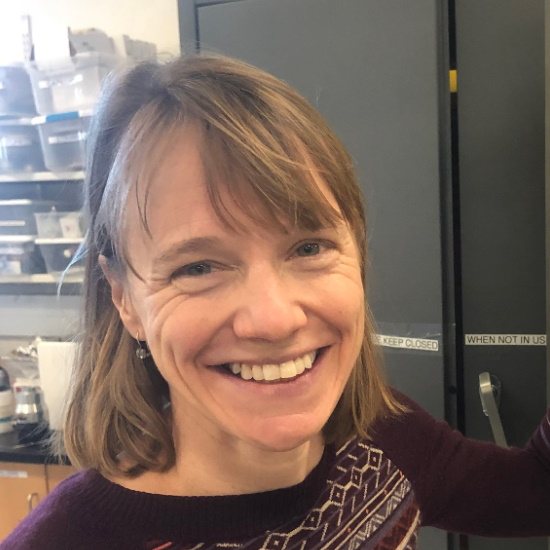
Sylvia Englund Michel, INSTAAR, University of Colorado Boulder, USA

Sylvia Englund Michel, INSTAAR, University of Colorado Boulder, USASylvia Englund Michel has been working at the Stable Isotope Lab at the University of Colorado’s Institute of Arctic and Alpine Research since 2004, measuring stable isotopes of atmospheric carbon dioxide and methane. She oversees a team to operate the isotope ratio mass spectrometers and associated prep systems, perform troubleshooting and maintenance, and implement data quality controls. She works in collaboration with colleagues at NOAA who manage the Global Greenhouse Gas Reference Network as well as stable isotope researchers from around the world. She graduated from Williams College and has a MS in Biology from the University of Utah. When not at the lab, Sylvia enjoys spending time with her family in the Colorado outdoors. |
| 15:20 - 15:30 |
The isotopic insight
Records of the stable isotopic composition of atmospheric methane (δ13C and δ2H) can help identify changes in sources and sinks that have caused the continuing growth of the atmospheric methane burden. The unexpected upturn in the amount of methane in the air in 2007 was concurrent with a negative shift in δ13C, reversing the sustained positive trend of the preceding 200 years. Changes in methane mole fraction and its carbon isotopic composition have eliminated some hypotheses for the rise in methane, but global modelling is still too ill-constrained to fully solve the problem. There are currently few long-term records of δ2H, but a larger network of measurements of this isotope would help constrain global inversions. The isotopic composition of the methane emitted from different source categories needs to be well known, taking into account regional variability in the isotopic signatures, for example latitudinal variability in wetlands. Detailed ground-based measurements are used to identify the signature of individual sources, and regional signatures of the bulk emissions from a source region can be identified using measurements from aircraft or fixed sites. 
Dr Rebecca Fisher, Royal Holloway, University of London, UK

Dr Rebecca Fisher, Royal Holloway, University of London, UKDr Rebecca Fisher is a lecturer in the Department of Earth Sciences at Royal Holloway University of London. Following an MSci in Physics at Imperial College London, she carried out a PhD at Royal Holloway on development of techniques for isotopic measurement of atmospheric methane which has led to further research in this field, and participation in projects from the Arctic to the tropics to resolve source isotopic composition. She currently leads a NERC project ‘Discovering reasons for atmospheric methane growth using deuterium isotopes’ and has set up a mobile laboratory for greenhouse gas measurements which is being used to map and identify the source of fugitive methane emissions. |
| 15:30 - 15:45 | Discussion |
| 15:45 - 16:00 | Break |
| 16:00 - 16:25 |
Using satellite measurements to interpret changes in atmospheric methane
Surface observations have recorded large and incompletely understood changes to atmospheric methane this century. Their ability to reveal the responsible surface sources and sinks is limited by their geographical distribution, which is biased towards the northern midlatitudes. Data from Earth-orbiting satellites designed specifically to measure atmospheric methane have been available since 2009 with the launch of the Japanese Greenhouse gases Observing SATellite. This presentation will assess what we have learnt from these satellite data, with a particular focus on recent years that include some of the largest global atmospheric growth rates of methane since surface observations began in the 1980s. 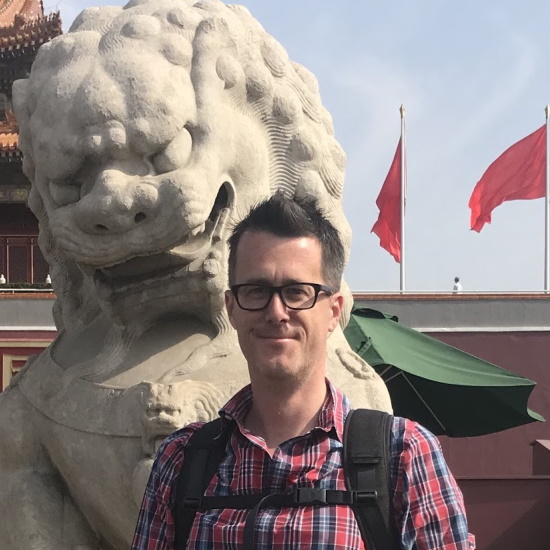
Professor Paul Palmer, University of Edinburgh, UK

Professor Paul Palmer, University of Edinburgh, UKPaul Palmer is a Professor at the University of Edinburgh. His research is focused on understanding the physical and chemical processes that drive variations in the atmospheric composition of Earth, embracing data, models, and theory. He has pioneered new methods to interpret satellite observations of reactive trace gases and particles and greenhouse gases. In recent work relevant to this discussion meeting, his group has revealed the importance of eastern African wetlands as a globally relevant source of methane. He is also the science director of the NERC National Centre for Earth Observation and a Distinguished Visiting Scientist at the Jet Propulsion Laboratory. He is a science team member of NASA and Japanese satellite instruments that measure atmospheric GHGs and is the UK co-lead of the French-UK MicroCarb satellite mission. He sits on the European Commission CO2 Task Force that is delivering information to support Europe’s response to the Paris Agreement. |
| 16:25 - 16:35 | Discussion |
| 16:35 - 17:00 |
Evaluation of the UK’s methane emissions using atmospheric data: current capability and future directions
Over the last three decades, the UK has reported a steady decline in methane emissions, with recent levels being around half of the 1990 value. Because of the availability of long-term observations in Ireland and the Netherlands since the 1980s, and the construction of a national monitoring network since 2012, it is possible to evaluate these inventory reports using atmospheric methane measurements. This 'top-down' evaluation has revealed that the reported emission decline of around 1%/yr over the last decade is consistent with atmospheric observations, but the reduction between 1990 and 2010 is not. Because of the relatively high density of observations in the last decade, it is becoming possible to discern which sources are responsible for the recent decline. In contrast, because the earlier 1990s and 2000s measurements are more remote, it is not possible to determine where the discrepancy with the inventory originates. To improve sector-level source evaluation, novel measurement and modelling approaches are being developed to discern methane emissions from the major source sectors using ethane and methane isotopologues. The role that these techniques could play in measuring our path to net-zero in the future will be discussed, both for the UK and elsewhere. 
Professor Matthew Rigby, University of Bristol, UK

Professor Matthew Rigby, University of Bristol, UKMatt Rigby is a Professor in the Atmospheric Chemistry Research Group (ACRG) at the University of Bristol. He was previously a Research Scientist at the Massachusetts Institute of Technology and obtained his PhD in Atmospheric Physics at Imperial College London. Matt is interested in understanding how and why the concentrations of greenhouse gases and stratospheric ozone depleting substances change in the atmosphere. Matt is the principle investigator (PI) of the UK Natural Environment Research Council (NERC) project the Detection and Attribution of Regional greenhouse gas Emissions in the UK (DARE-UK), which aims to better understand the UK’s greenhouse gas emissions. He is the PI of the OpenGHG project, a cloud-based platform for greenhouse gas data analysis, and is co-investigator of the UK Deriving Emissions related to Climate Change (DECC) network. In 2018, Matt served as lead author of the World Meteorological Organisation (WMO) Scientific Assessment of Ozone Depletion. |
| 17:00 - 17:10 | Discussion |
Chair

Professor Ute Skiba, UK Centre for Ecology & Hydrology, UK

Professor Ute Skiba, UK Centre for Ecology & Hydrology, UK
Professor Ute Skiba is a biogeochemist with 30 years of research experience in measurements of nitrous oxide (N2O), nitric oxide (NO) and methane (CH4) fluxes in natural and agricultural ecosystems and in temperate, tropical and arctic climate zones. Her focus lies on understanding the environmental drivers (climate, soil properties, agricultural management, atmospheric N deposition) and microbial processes leading to emissions of these pollutants to the atmosphere; determining spatial and temporal variability of soil trace gas fluxes; and upscaling from plot to larger, policy relevant areas through measurements and simple regression models. Her work has led to ~ 161 peer reviewed publications (Web of Science Researcher ID H index = 49).
| 11:55 - 12:00 |
The MOYA/ZWAMPS projects
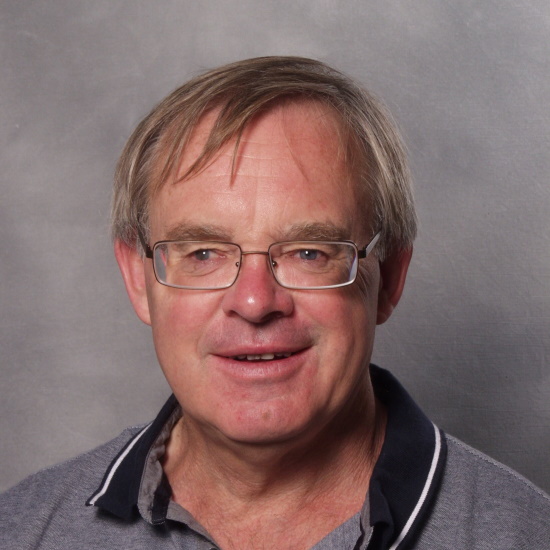
Professor Euan Nisbet, Royal Holloway University of London, UK

Professor Euan Nisbet, Royal Holloway University of London, UK |
|---|---|
| 12:00 - 12:25 |
From sink to source: high inter-annual variability in the carbon budget of a Southern African wetland
This talk reports on three years of continuous monitoring of carbon dioxide (CO2) and methane (CH4) emissions in two contrasting wetland areas of the Okavango Delta, Botswana: a perennial swamp and a seasonal floodplain. Both sites were net sinks of atmospheric C in 2018, but the radiative budget of the perennial swamp was strongly positive in 2018. Both ecosystems were sensitive to drought, which switched these sinks of atmospheric CO2 into sources in 2019. This phenomenon was particularly strong at the seasonal floodplain, due to a sharp decrease in gross primary productivity. Similarly, drought caused a marked decrease in CH4 emissions at the seasonal floodplain, but emissions from the perennial swamp were unaffected. This study demonstrates that complex and divergent processes can coexist within the same landscape, and that meteorological anomalies can significantly perturb the balance of the individual terms of the GHG budget. Given the contrasting effects of drought on the CO2 and CH4 flux terms, it is crucial to evaluate an ecosystem’s complete carbon budget instead of treating these GHGs in isolation. 
Dr Carole Helfter, UK Centre for Ecology and Hydrology, UK

Dr Carole Helfter, UK Centre for Ecology and Hydrology, UKDr Carole Helfter is an environmental physicist at the UK Centre for Ecology and Hydrology. Her research focuses on measuring and interpreting the exchange of carbon dioxide and methane between land surface and atmosphere in natural and urban ecosystems. She has a keen interest in methane emissions from wetlands, particularly in the tropics, and in the environmental processes that underpin them. She recently led a four-year study in the Okavango Delta, Botswana, to quantify the carbon budget and its dynamics in a pristine wetland undergoing hydro-climatic pressures. Current research foci include the role of vegetation on modulating emissions of methane in pristine and degraded tropical wetlands. |
| 12:25 - 12:35 | Discussion |
| 12:35 - 13:00 |
Methane flux measurements along a floodplain soil moisture gradient in the Okavango Delta, Botswana
Data-poor tropical wetlands constitute an important source of atmospheric CH4 in the world. The group studied CH4 fluxes using closed chambers along a soil moisture gradient in a tropical seasonal swamp in the Okavango Delta, Botswana, the sixth largest tropical wetland in the world. The objective of the study was to assess net CH4 fluxes and controlling environmental factors in the Delta’s seasonal floodplains. Net CH4 emissions from seasonal floodplains in the wetland were estimated at 0.072 ± 0.016 Tg.a-1. Microbial CH4 oxidation of approximately 2.817 × 10-3 ± 0.307 × 10-3 Tg.a-1 in adjacent dry soils of the occasional floodplains accounted for the sink of 4% of the total soil CH4 emissions from seasonal floodplains. The observed microbial CH4 sink in the Delta’s dry soils is, therefore, comparable to the global average sink of 4–6%. Soil water content (SWC) and soil organic matter were the main environmental factors controlling CH4 fluxes in both the seasonal and occasional floodplains. The optimum SWC for soil CH4 emissions and oxidation in the Delta were estimated at 50% and 15%, respectively. Electrical conductivity and pH were poorly correlated (r2 ≤ 0.11, p < 0.05) with CH4 fluxes in the Delta’s seasonal floodplain. 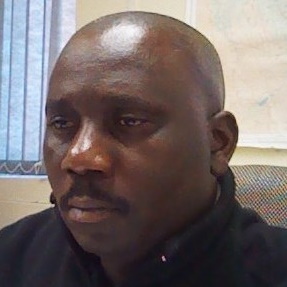
Dr Mangaliso J Gondwe, Okavango Research Institute, University of Botswana, Botswana

Dr Mangaliso J Gondwe, Okavango Research Institute, University of Botswana, BotswanaDr Mangaliso Gondwe is a biogeochemist at the Okavango Research Institute of the University of Botswana, Botswana. The Institute is dedicated primarily to the study of the Okavango Delta wetlands and adjacent drylands. Dr Gondwe’s research combines fields of aquatic ecology, limnology and biogeochemistry to assess effects of multiple stressors including nutrients and climate change on the Okavango Delta and other lakes and wetlands in southern Africa. He is currently coordinating the climate change programme, one of the Institute’s five research programmes namely; ecosystem dynamics, ecosystem services, water resources management, sustainable tourism and climate change. One of his recent researches was on emissions of GHGs in the Okavango Delta wetlands, which was done in collaboration with researchers from the UK Centre for Ecology and Hydrology (UKCEH). Dr Gondwe is looking for more fruitful collaborations with researchers interested in the Okavango Delta wetlands and other southern African aquatic ecosystems. |
| 13:00 - 13:10 | Discussion |
| 13:10 - 13:20 | Break |
| 13:20 - 13:35 |
Ground based remote sensing of greenhouse gases over Uganda using a portable spectrometer
The natural ecosystems of tropical Africa represent a significant store of carbon, playing an important but uncertain role in the global atmospheric budgets of greenhouse gases (GHGs). Recent studies using satellite data have concluded that unusually heavy rainfall over East Africa in late 2019 led to additional methane emissions equivalent to over a quarter of the growth in global CH4 emissions in 2019, and that the tropical Africa region dominates net carbon emission across the tropics. These conclusions, as well as those of other studies looking at the tropical African carbon and methane cycles, rely on the accuracy of satellite datasets and atmospheric transport models over a region where there is a lack of independent observations to confirm their robustness and validity. This presentation shows the first ground-based observations of GHG column concentrations over tropical East Africa, obtained using a portable spectrometer set up in Jinja, Uganda. The instrument was operated remotely and near-continuously for a three-month period in early 2020, by housing it inside an automated weatherproof enclosure. This dataset helps to demonstrate the value that these ground-based GHG column measurements can provide towards our understanding of the carbon and methane budget for the tropical East Africa region. 
Dr Neil Humpage, University of Leicester, UK

Dr Neil Humpage, University of Leicester, UKDr Neil Humpage is a postdoctoral research associate in the School of Physics and Astronomy at the University of Leicester. His current research interests concern ground based remote sensing of atmospheric composition using absorption spectroscopy, with a particular focus on greenhouse gases. He studied physics as an undergraduate at St Anne’s College, University of Oxford, before going on to achieve his PhD in Atmospheric Physics at Imperial College London. His PhD studies had a strong focus on remote sensing instrumentation, working on an airborne far-infrared spectrometer to investigate the physical properties of water vapour and cirrus clouds, and participating in several field campaigns. Since graduating from Imperial College, he has worked as a postdoctoral researcher in the Earth Observation Science group at the University of Leicester, where he has contributed towards projects focusing on a variety of different Earth observing technologies and instruments to help us better understand atmospheric composition. |
| 13:35 - 13:50 |
Methane fluxes from Zambian tropical wetlands
Airborne measurements of methane (CH4) were recorded over three major wetland areas in Zambia in February 2019 during the MOYA (Methane Observations and Yearly Assessments) ZWAMPS field campaign. Enhancements of up to 600 ppb CH4 were measured over the Bangweulu (11°36’ S, 30°05’ E), Kafue (15°43’ S, 27°17’ E), and Lukanga (14°29’ S, 27°47’ E) wetlands. Three independent approaches were used to quantify the methane emission fluxes; airborne mass balance, airborne eddy covariance, and atmospheric inversion modelling, with results ranging between 5.0 and 27.9 mg CH4 m-2 hr-1 across the three wetlands. In contrast, fluxes simulated by 19 process-based wetland models (WetCHARTs and GCP suites) were a factor of 10 smaller on average (0.6 – 3.9 mg CH4 m-2 hr-1). Independent total-column CH4 observations (TROPOMI and GOSAT) were also compared with measurements. These results identify globally significant fluxes of methane from tropical African wetlands, which are not currently accounted for in global methane budgets. 
Dr Jacob Shaw, The University of Manchester, UK

Dr Jacob Shaw, The University of Manchester, UKDr Jacob Shaw is a Postdoctoral Research Associate in atmospheric science, working on quantifying greenhouse gas emission fluxes from a variety of sources, including onshore and offshore oil and gas facilities, as well as natural wetlands. He works with Professor Grant Allen at The University of Manchester, where he has been involved in projects studying emissions from fracking, using unmanned aerial vehicles (drones) to measure trace gases, and measuring methane fluxes from African tropical wetlands. Jacob’s background is in atmospheric chemistry – he received a PhD from the University of York in 2018 for research into gas-phase reaction rates between volatile organic compounds and atmospheric free radicals (OH and Cl). |
| 13:50 - 14:00 | Discussion |
| 14:00 - 14:15 |
Large fluxes of methane from Bolivian seasonal wetlands
Methane (CH4) mole fractions from the large semi-seasonal Llanos de Moxos wetlands in northern Bolivia were measured using an aircraft platform at the peak of the wetland extent during the late rainy season in early March 2019. These wetlands cover an area larger than the Netherlands and Belgium combined, and consist of tropical savannah with annual flooded and dry seasons. Methane measurements were made during upwind and downwind flights over the wetland extent to allow box modelling and inversion modelling of the region to determine the methane fluxes from the surface. Grab samples of atmosphere were also taken periodically to allow analysis of 13CCH4 to provide source attribution of the CH4 enhancement. Daily fluxes of CH4 were predicted to be at least 150 mg CH4/m2/day during the measurement campaign, and potentially significantly larger. These emission fluxes are at least a factor of 4 larger than previous Amazon basin studies. Isotopic analysis confirmed that the wetlands are the only likely source of the wide area methane enhancement measured. These Bolivian results show that seasonal wetlands in the tropics are major sources of CH4 and potentially important drivers of methane’s interannual variability. 
Dr James France, Royal Holloway, University of London and British Antarctic Survey, UK

Dr James France, Royal Holloway, University of London and British Antarctic Survey, UKDr James France is a post-doctoral researcher in Atmospheric Chemistry at Royal Holloway, University of London and is also part of the Air-Ice-Climate Group at the British Antarctic Survey. He is currently working on research looking into methane emissions at a wide variety of scales, from assessing infrastructure emissions in urban areas to large regional emissions from wetlands. Much of his research uses vehicles as measurement platforms, such as cars, ships and aircraft to allow rapid measurements over large areas and measurements in regions that are difficult to access. |
| 14:15 - 14:30 |
Variations in East African methane as viewed from space
The last two decades have seen a time of unprecedented change in the hydrology of East Africa. The early 2000s were characterized by drought and the water levels of Lake Victoria receding. In contrast, recent widespread flooding has resulted in lake levels rising to their highest recorded level and the displacement of thousands living round its edge. What does this mean for methane? Water availability is one of the major drivers of methane emissions in this region, with the seasonal cycle of methane emissions linked to the seasonal movement of the inter-tropical convergence zone and associated rainfall. This talk will examine what satellites can tell us, both about the changes in hydrology and changes in methane enhancements and emissions over East Africa. Satellite data have helped identify a substantial increase in methane emissions between 2010–2015 from the Sudd wetlands of South Sudan. More recent data have shown above average seasonal emissions following extreme rainfall in East Africa in 2019. Finally, the recent satellite record will be discussed, examining the potential role of East Africa in the high global methane growth rate of 2020. 
Dr Mark Lunt, University of Edinburgh, UK

Dr Mark Lunt, University of Edinburgh, UKMark Lunt is a postdoctoral researcher, working at the University of Edinburgh. His research involves the use of models to understand observed variations of atmospheric greenhouse gases such as carbon dioxide and methane. As part of the MOYA project Mark’s work involved using satellite data of methane concentrations in combination with atmospheric models to explore changes in methane emissions from the African continent. Prior to joining the University of Edinburgh, Mark completed his PhD in the School of Chemistry at the University of Bristol in 2016. He graduated from St Catharine’s College, University of Cambridge in 2010. |
| 14:30 - 14:40 | Discussion |
| 14:40 - 14:50 | Break |
Chair

Professor Ute Skiba, UK Centre for Ecology & Hydrology, UK

Professor Ute Skiba, UK Centre for Ecology & Hydrology, UK
Professor Ute Skiba is a biogeochemist with 30 years of research experience in measurements of nitrous oxide (N2O), nitric oxide (NO) and methane (CH4) fluxes in natural and agricultural ecosystems and in temperate, tropical and arctic climate zones. Her focus lies on understanding the environmental drivers (climate, soil properties, agricultural management, atmospheric N deposition) and microbial processes leading to emissions of these pollutants to the atmosphere; determining spatial and temporal variability of soil trace gas fluxes; and upscaling from plot to larger, policy relevant areas through measurements and simple regression models. Her work has led to ~ 161 peer reviewed publications (Web of Science Researcher ID H index = 49).
| 14:50 - 15:15 |
Isotopic signatures of methane emissions from tropical fires and wetlands: the MOYA and ZWAMPS flights
NERC MOYA/ZWAMPS flights sampled strong methane fluxes over wetlands in the Nile, Congo and Zambezi basins, and Bolivian southern Amazonia, and over fires in African woodland, cropland, and savannah grassland. δ13CCH4 isotopic signatures were in the range -55 to -49‰ for emissions from equatorial Nile wetlands and agricultural areas, but widely -60 ± 1‰ from Upper Congo and Zambezi wetlands. Very similar δ13CCH4 signatures were measured over the Amazonian wetlands of NE Bolivia (around -59‰) and the overall δ13CCH4 signature from outer tropical wetlands in the southern Upper Congo and Upper Amazon drainage plotted together was -59 ± 2‰. In smoke from tropical dry C3 forest fires in Senegal, δ13CCH4 values were around -28‰. African tropical C4 grass fire δ13CCH4 values were -16 to -12‰. For African cattle, δ13CCH4 values were around -60 to -50‰. Methane from urban landfills in Zambia and Zimbabwe had δ13CCH4 around -37 to -36‰. Campaigns also observed widespread regional smoke pollution over Africa, in both the wet and dry seasons, and large urban pollution plumes. These new isotopic values will help place isotopic constraints on global methane budget models. 
Professor Euan Nisbet, Royal Holloway University of London, UK

Professor Euan Nisbet, Royal Holloway University of London, UK |
|---|---|
| 15:15 - 15:25 | Discussion |
| 15:25 - 15:50 |
Spatially-resolved wetland methane isotopic source signatures
Atmospheric methane (CH4) concentrations have been rising globally since 2007 with 2020 exhibiting the largest year-on-year growth in the observational record of the past 40 years. The mechanisms driving this growth trend remain a subject of controversy and many recent studies have utilized observations of atmospheric methane isotopologues (δ13C-CH4 and δ2H-CH4) in their analyses to quantify source and sink fluxes of CH4. This work presents spatially-resolved source signatures of δ13C-CH4 and δ2H-CH4 from wetlands and discusses some of the limitations in modelling methane isotopic ratios in the atmosphere. This study derives a δ13C-CH4 source signature distribution based on differences between four main isotopically differentiated wetland ecosystems (high-latitude bogs and fens, and low-latitude C3- and C4-dominated wetlands) and a δ2H-CH4 source signature distribution based on the signature of meteoric waters (ie precipitation). The analysis shows how this information can be used to better simulate atmospheric isotopic levels for use in inverse modelling and demonstrates how incorrect assumptions about the spatial distribution of source signatures can lead to erroneous simulations of trend, inter-hemispheric difference and seasonal cycle. This analysis highlights the need to robustly account for uncertainties in source signatures when conducting modelling studies. 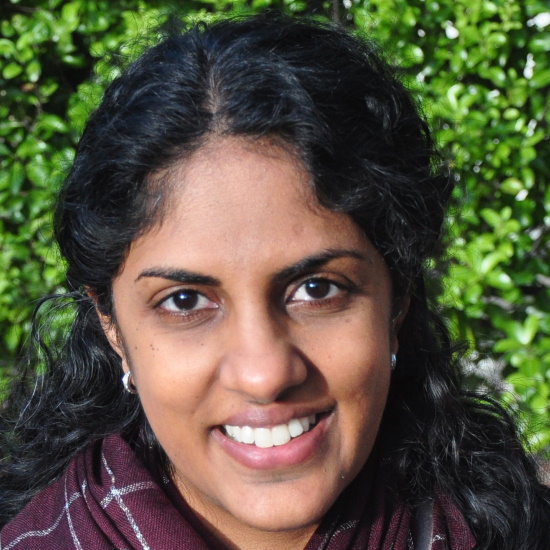
Dr Anita L Ganesan, University of Bristol, UK

Dr Anita L Ganesan, University of Bristol, UKDr Ganesan's research focuses on understanding the influences on concentrations of greenhouse gases and ozone depleting substances in the atmosphere. They are interested in finding new ways to understand how sources and sinks of these trace gases vary from different systems and regions. One of their main interests is in understanding why methane concentrations in the atmosphere exhibit large year-to-year changes. They combine high-resolution regional models with data from surface, aircraft and satellite platforms, and information from isotopologues and other tracers to derive an understanding of the methane budget. |
| 15:50 - 16:00 | Discussion |
| 16:00 - 16:10 | Break |
| 16:10 - 16:35 |
Large east-west difference in Amazon methane emissions revealed by in-situ greenhouse gas measurements and satellite data
Approximately 30% of global CH4 emissions are thought to derive from wetlands. Because of its vast area and its monsoonal, seasonally very wet, climate Amazonia is one of the largest wetland areas and its emissions may be sensitive to a changing climate. A unique dataset of 590 measured vertical profiles of CH4 and CO measured at four locations in Amazonia from 2010–2018 permits us to investigate Amazonia's methane budget, it's spatial and temporal variation and flux controls. Based on an air column budgeting technique the group estimates that Amazonia emits 46.2±10.3 TgCH4yr-1 with non-fire sources (mainly wetlands) dominating emissions. There are distinct regional patterns. Emissions from southern regions are strongly seasonal and vary synchronously with flood levels. In contrast the northwest-central Amazon emissions are nearly aseasonal, consistent with weak precipitation seasonality. Furthermore there is a strong east-west difference with large emissions concentrated in eastern Amazonia. A recent atmospheric transport inversion study using total-air-column methane retrieved from space confirms this pattern. Why there is such a strong east-west difference is currently unclear. Finally while the analysis of the vertical profiles does not suggest a clear change in emissions over the past decade the atmospheric transport modelling study suggests there is an increase. 
Dr Luana Santamaria Basso, University of Leeds, UK and National Institute of Space Research (INPE), Brazil

Dr Luana Santamaria Basso, University of Leeds, UK and National Institute of Space Research (INPE), BrazilLuana S Basso investigates the Amazon biogeochemical cycles, methane and carbon dioxide mainly, and the climate and anthropogenic activities feedbacks on these cycles. Her current research activities involve determining the methane and carbon balance since the Amazon forest is likely to experience a warming and increasingly variable climate, and high direct human pressure as well. 
Professor Emanuel Gloor, University of Leeds, UK

Professor Emanuel Gloor, University of Leeds, UKEmanuel Gloor is a Physicist by training (ETH Zürich, Switzerland). His research focuses on the global carbon cycle and related cycles (eg methane), and the response of these cycles to a changing climate. Some of his research focusses on the tropics and in particular Amazonia. He has led a NERC consortium (AMAZONICA) which focused on understanding the resilience of Amazonian forests. One of the components of AMAZONICA was initiation of a basin-wide lower-troposphere greenhouse gas monitoring program over the Amazon together with Luciana Gatti and John Miller, which continues until today. These data are the basis of the presentation at this meeting. He is also involved in studies aiming at understanding limits of functioning of tropical forests based on on-ground measurements and targeted experiments. |
| 16:35 - 16:45 | Discussion |
| 16:45 - 17:10 |
Methane emissions from Amazon floodplain trees
Most work on the emission of methane in wetlands over the past several decades has focused on exchanges at the soil surface, aquatic surfaces or from emergent, low canopy herbaceous plants. The woody surfaces of the trees that dominate productivity in these ecosystems, which were previously thought to be neutral in the exchange of methane, are now known to be important mediators of this trace gas, from the soils where it is produced to the atmosphere. This presents opportunities in helping to quantify and account for prior gaps in regional budgets but also new complexity and uncertainty with work needed to understand hydrological, species and within and between-tree variability as well as the relationship between tree fluxes and the soils in which trees grow. In this talk, the group demonstrate the importance of understanding tree methane exchange for the Amazon methane budget and present new findings that show how riparian trees can remain sources of methane when not flooded with implications for broader tropical methane budgets. The talk concludes by highlighting future areas of importance in this growing area of ecosystem biosphere/atmosphere exchange research at a time when forest expansion is being promoted. 
Professor Vincent Gauci, University of Birmingham, UK

Professor Vincent Gauci, University of Birmingham, UKProfessor Vincent Gauci is a biogeochemist and ecologist who examines how carbon-rich ecosystems such as forests, wetlands and peatlands function and interact with the atmosphere. In particular he focuses on questions relating to the exchange of powerful greenhouse gases from these ecosystems and agroecosystems in response to global environmental change and, to answer these questions, he has led projects across the Andes, Amazon, Borneo and Sumatra as well as many other locations. He recently joined the University of Birmingham, Birmingham Institute of Forest Research (BIFoR) as Professorial Fellow, and maintains his visiting Chair in Global Change Ecology at the Open University. |
| 17:10 - 17:20 | Discussion |
Chair
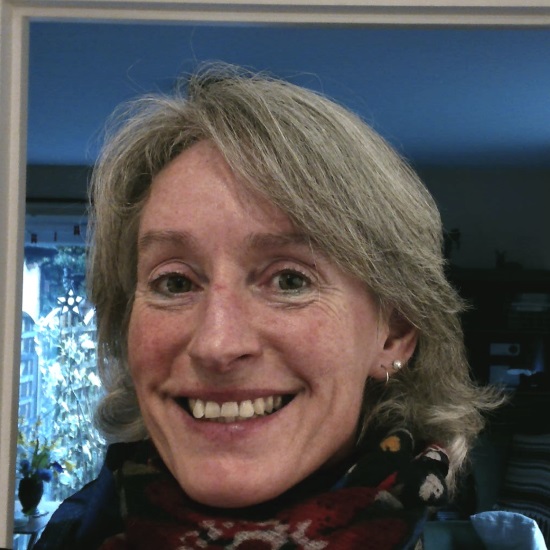
Dr Anna Jones, British Antarctic Survey, UK

Dr Anna Jones, British Antarctic Survey, UK
Dr Anna Jones is Science Leader for the British Antarctic Survey's Atmosphere, Ice, and Climate Team. She is an Atmospheric Chemist by training, having completed her PhD at Cambridge University. She joined BAS 26 years ago, and has carried out research in a range of areas, including on stratospheric ozone, and the exchange of reactive trace gases between the atmosphere and snow/sea ice. More recently she has been involved in studies of greenhouse gases. As well as a programme of long-term observations around Antarctica and the contiguous Southern Ocean, her group has recently carried out the first assessment of methane emissions from wetlands of northern Bolivia. They have also been involved in a UK project to assess emissions from offshore gas rigs in the southern North Sea. She runs BAS's atmospheric chemistry laboratory at Halley station in coastal Antarctica, and has spent 2 summer seasons working in Antarctica.
| 07:00 - 07:25 |
The roles of atmospheric transport and isotopic data for understanding CH4 – CO – OH chemistry
Removal of CH4 by the hydroxyl radical (OH) is part of a much broader role played by this critically important atmospheric cleansing agent. However, our limits to understanding the OH spatial distribution and whether it is increasing or decreasing are seen in the range of estimates coming from recent atmospheric chemistry papers and this year’s IPCC Working Group I report. An early focus on CH4 – CO – OH chemistry identified reasons for a decrease in OH, whereas more detailed treatments of atmospheric chemistry are now seeing that changes in NOx and water vapour, that increase it, are probably dominant. This overview will summarise how use of 13C and 14C isotopic data for both CH4 and CO plays a key role in determining both global and regional changes in OH. Advances in understanding the solar cycles of 14C production together with over 30 years of Southern Hemisphere data show a significant decrease in δ13CO and no increase in Δ14CO despite increases in 14C production. This supports a decrease in OH but also requires careful treatment of trends in atmospheric transport as most 14CO production occurs in the lower stratosphere whereas most removal is in the troposphere. 
Professor Martin Manning, Victoria University of Wellington, New Zealand

Professor Martin Manning, Victoria University of Wellington, New ZealandMartin Manning has worked across several areas of science including: theoretical nuclear physics, the carbon cycle, atmospheric chemistry, and climate change science more broadly. From 2002 to 2007, he was Director of the IPCC Working Group I Technical Support Unit for the Fourth Assessment Report on Climate Change to governments when they won the Nobel Peace Prize with Al Gore. He has been author of more than seventy peer reviewed publications, two this year, and more than twenty book chapters on climate change. As inaugural Director of Victoria University of Wellington’s Climate Change Research Institute, he led the first interdisciplinary study of New Zealand’s capacity to adapt to climate change. His current work includes analysis of 30 years of 14CO data to determine changes in atmospheric oxidation rates, and being on an advisory panel to establish community-led coastal adaptation in Kāpiti, Wellington, New Zealand. |
|---|---|
| 07:25 - 07:35 | Discussion |
| 07:35 - 08:00 |
Australian farming, coal and gas field emissions; methane source surprises and carbon accounting challenges
Coal seam gas (CSG), coal mining and agriculture in a ~40,000 km2 southeast portion of the Surat Basin accounts for 3% of Australia’s reportable methane emissions. Mobile ground-based surveys and airborne measurements of the atmospheric methane mole fraction in 2018 and 2019 have identified regions where the baseline data for the development of custom methane inventories is good or poor. In regions of disparate CSG and agricultural point sources, this study shows strong agreement between airborne measurements of methane emissions and the bottom-up inventory. Compared to most international studies, methane emissions in the Surat Basin CSG fields are low per unit of gas produced. However, the CSG emission loss rate determined from this research is two to three times higher than previous inventory and atmospheric inverse estimates for the region. For this study, neither the mass balance results nor the collected isotope data align with the bottom-up inventory for many portions of the agricultural districts. The results highlight the need for improved data transparency globally and the development of seasonal inventories to be able to close the gap between top-down versus bottom-up methane emission estimates at the regional scale. The workflow can be easily adapted to constrain inventories worldwide. 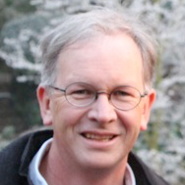
Associate Professor Bryce Kelly, University of New South Wales, Australia

Associate Professor Bryce Kelly, University of New South Wales, AustraliaAssociate Professor Bryce Kelly is an Earth and Environmental Scientist with over 30 years of international consulting and research experience. He specialises in using isotopes to trace and assess the environmental impacts of coal seam gas production, coal mining, agriculture, and urban developments. In recent years he has completed over 20,000 km of mobile ground-based methane measurements to verify aspects of Australia’s greenhouse gas inventory. |
| 08:00 - 08:10 | Discussion |
| 08:10 - 08:35 |
How necessary and feasible are reductions of methane emissions from livestock to support stringent temperature goals?
Agriculture is the largest single source of global anthropogenic methane (CH4) emissions, with ruminants the dominant contributor. Livestock CH4 emissions are projected to grow another 30% by 2050 under current policies, yet few countries have set targets or are implementing policies to reduce emissions in absolute terms. The reason for this limited ambition may be linked not only to the underpinning role of livestock for nutrition and livelihoods in many countries but also diverging perspectives on the importance of mitigating these emissions, given the short atmospheric lifetime of CH4. Here, Dr Gonzalez Fischer shows that in mitigation pathways that limit warming to 1.5°C, which include cost-effective reductions from all emission sources, the contribution of future livestock CH4 emissions to global warming in 2050 is about one-third of that from future net carbon dioxide emissions. Future livestock CH4 emissions, therefore, significantly constrain the remaining carbon budget and the ability to meet stringent temperature limits. The talk reviews options to address livestock CH4 emissions through more efficient production, technological advances and demand side changes, and their interactions with land-based carbon sequestration. The talk concludes that bringing livestock into mainstream mitigation policies, while recognizing their unique social, cultural and economic roles, would make an important contribution towards reaching the temperature goal of the Paris Agreement and is vital for a limit of 1.5°C. 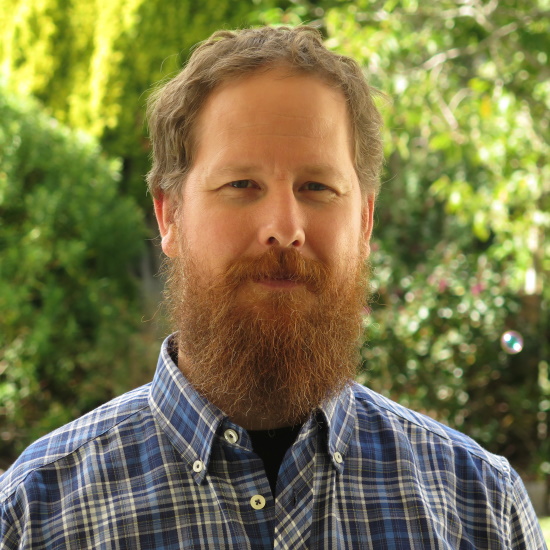
Dr Carlos M Gonzalez Fischer, New Zealand Agricultural Greenhouse Gas Research Centre, New Zealand

Dr Carlos M Gonzalez Fischer, New Zealand Agricultural Greenhouse Gas Research Centre, New ZealandCarlos is currently a Postdoctoral Scientist at the New Zealand Agricultural Greenhouse Gas Research Centre (NZAGRC). His research looks at the role of livestock in sustainable agri-food systems. He holds a 'Licenciado' degree and a PhD in Biological Sciences from the University of Buenos Aires. Carlos started his career as an ecologist, studying the impact of land use changes on biodiversity in Agroecosystems of the Argentine Pampas. Since then, he has served as a Scientific Officer with Compassion in World Farming (a UK-based global NGO), as an independent consultant on sustainable food production and consumption, as a Postdoctoral Researcher with the Buenos Aires Institute of Ecology, Genetics and Evolution (hosted by the University of Buenos Aires and the National Research Council in Argentina), and as a technical consultant to the National UN-REDD Programme in Argentina. |
| 08:35 - 08:45 | Discussion |
| 08:45 - 09:05 | Break |
Chair

Dr Anna Jones, British Antarctic Survey, UK

Dr Anna Jones, British Antarctic Survey, UK
Dr Anna Jones is Science Leader for the British Antarctic Survey's Atmosphere, Ice, and Climate Team. She is an Atmospheric Chemist by training, having completed her PhD at Cambridge University. She joined BAS 26 years ago, and has carried out research in a range of areas, including on stratospheric ozone, and the exchange of reactive trace gases between the atmosphere and snow/sea ice. More recently she has been involved in studies of greenhouse gases. As well as a programme of long-term observations around Antarctica and the contiguous Southern Ocean, her group has recently carried out the first assessment of methane emissions from wetlands of northern Bolivia. They have also been involved in a UK project to assess emissions from offshore gas rigs in the southern North Sea. She runs BAS's atmospheric chemistry laboratory at Halley station in coastal Antarctica, and has spent 2 summer seasons working in Antarctica.
| 09:05 - 09:30 |
The use of isotope information to investigate the source of observed CH4 and CO2 emissions from the edge of the Greenland Ice sheet
Gaseous emissions of methane (CH4) and carbon dioxide (CO2) from the subglacial environment under Greenland Ice Sheet (GrIS) were discovered recently. The understanding of mechanisms and magnitudes of emissions, and the origin of the gases, is extremely sparse and hence it is yet to be determined how important it is for the panarctic carbon budget. In order to constrain the source magnitude and the origin of the subglacial CH4 and CO2 the group measured the in situ net gaseous emissions, dissolved concentrations and isotopic composition of gases (13C and 2H) at the onset, near maximum and at the end of the melt season in 2018 and 2019. They found a close correlation between gaseous and dissolved CH4 and CO2, respectively, indicating that degassing of CH4 and CO2 from the subglacial meltwater is the main source of these gases in the subglacial air. The diurnal variability of in situ mole fractions of CH4 and CO2 in subglacial air was related to meltwater runoff showing that the net emission magnitude is directly related to glacial hydrology. The isotopic signature of CH4 in the subglacial air indicated that subglacial CH4 likely originated from microbial acetate fermentation, and it remained constant at maximum and waning stage of melt. Isotopic signatures of subglacial gaseous CO2 indicate mixed subglacial sources from microbial oxidation of CH4, remineralization of organic carbon in sediments and possibly influenced by removal of CO2 by chemical weathering. In addition, Professor Röckmann will briefly highlight the successful implementation of in situ IRMS measurements at various locations in Europe, and their use to constrain local and regional emission inventories. 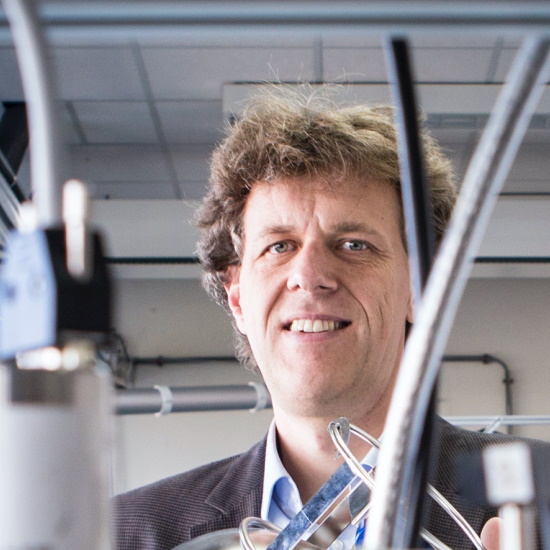
Professor Thomas Röckmann, Utrecht University, The Netherlands

Professor Thomas Röckmann, Utrecht University, The NetherlandsThomas Röckmann is a leading specialist in the development and application of innovative isotope techniques to atmospheric research. He is head of the Atmospheric Physics and Chemistry Group at the Institute for Marine and Atmospheric research Utrecht (IMAU) of Utrecht University. His group operates a large and innovative atmospheric chemistry laboratory specialized in isotope ratio measurements on various trace species, including CH4, CO2, N2O, CO, H2. His research covers a wide field of applications with isotope studies, eg global trace gas budgets, detailed kinetic isotope effects, impact of anthropogenic activities on the atmosphere or stratosphere-troposphere exchange. He participates or has participated as PI for isotope analysis in numerous national and international projects. |
|---|---|
| 09:30 - 09:40 | Discussion |
| 09:40 - 10:05 |
Arctic methane
According to the latest IPCC report, the Arctic is warming at more than twice the global rate. Increases in extreme heat events, fire regimes, and permafrost thaw have accompanied this warming, all of which can contribute to increased methane (CH4) emissions. Sub-sea CH4 seepage is also anticipated to increase in a warmer world, while the Arctic is projected to reach practically ice-free conditions in summer at least once before 2050, with unclear effects on ocean emissions and weather patterns. Here, the authors present estimates of recent Arctic Ocean CH4 fluxes from cross-disciplinary observations in the ocean and the atmosphere combined with state-of-the-art atmospheric models. They demonstrate that the present-day flux is likely small, at least for active seeps around Svalbard, but that ocean-atmosphere fluxes are observable under some conditions. They go on to present the latest trends and developments of atmospheric CH4 concentrations measured on Svalbard and discuss the need for further investigations as well as their plans to improve estimates of the Arctic and global CH4 budget with new oceanographic measurements and surveys, and with the inclusion of methane isotope and satellite data into atmospheric models. 
Dr Stephen Platt, NILU – Norwegian Institute for Air Research, Norway

Dr Stephen Platt, NILU – Norwegian Institute for Air Research, NorwayDr Stephen Platt is a senior scientist at the Norwegian Institute for Air Research (NILU) specialising in atmospheric composition change. He is responsible for Norwegian greenhouse gas measurements as part of the International Carbon Observing System (ICOS) and has authored or co-authored several research articles on Arctic Ocean methane fluxes and the global methane budget. He holds a doctorate in Atmospheric Science from the Swiss Federal Institute of Technology in Zurich, Switzerland, a master’s degree in Environmental Chemistry from the University of Copenhagen, Denmark, and a bachelor’s degree in chemistry from the University of York, UK. |
| 10:05 - 10:15 | Discussion |
| 10:15 - 10:40 |
Net methane and carbon dioxide exchange from European Arctic wetlands in Summer 2019: airborne quantification and bottom-up intercomparison
Arctic wetlands and surrounding ecosystems are understood to be both a significant source of methane (CH4) and a sink of carbon dioxide (CO2) during summer months. Arctic wetlands contribute an estimated 7 – 16 Tg CH4 year-1 to the global methane budget, whereas the terrestrial Arctic represents an average CO2 sink of -0.13 Pg CO2 year-1. Surface exchange of methane and CO2 in the Arctic is also highly sensitive to climate feedbacks due to the presence of Arctic amplification of global warming. Arctic mean air temperatures have increased at more than twice the rate of the global average, with current arctic temperature growth over 1.5 °C higher than the 1971–2000 global average temperature growth with further warming predicted for the future. Higher temperature may result in enhanced microbial methanogenesis in wetland ecosystems. Furthermore, thawing of permafrost as a result of increasing temperature may result in an increase in arctic wetland extent as well as enabling the release of organic carbon from the estimated ~1700 Pg of stored soil organic carbon in arctic permafrost. It is therefore clear that methane emissions from high-latitude wetlands may become increasingly important over time due to their high sensitivity to climate change. However, precise quantification of the Arctic methane source and CO2 sink remains poorly characterised. The Methane Observations and Yearly Assessment (MOYA)-Arctic field campaign was conducted from 29 July 2019 to 2 August 2019 based in Kiruna, Sweden. This field campaign used in situ aircraft measurements to quantify emissions of CH4 and other trace gases from northern Swedish and Finnish (Fennoscandian) wetlands (66-69°N, 22-28°E) during the summer period. This work presents aircraft mass balance flux estimates for wetland CH4 emission and biospheric carbon dioxide uptake during one of the survey flights carried out during the MOYA-Arctic campaign and compares with previous similar aircraft studies in the region. Additionally, this study compares the fluxes obtained via aircraft mass balance with fluxes from Global Carbon Project (GCP) wetland process models, where both the magnitude and spatial distribution of CH4 fluxes are compared with the aircraft results. 
Patrick Barker, The University of Manchester, UK

Patrick Barker, The University of Manchester, UKPatrick is a fourth-year PhD student in the Grant Allen Group at The University of Manchester. His project is focused on quantification of methane and nitrous oxide emissions using a combination of in situ aircraft and ground-based measurement techniques. So far, Patrick has published work on greenhouse gas emission quantification from African biomass burning, and methane and carbon dioxide aircraft fluxes from European Arctic wetlands. Patrick is also currently working on ground-based characterization of recreational nitrous oxide emissions from an urban environment in Manchester. |
| 10:40 - 10:50 | Discussion |
| 10:50 - 11:15 |
Measuring climate driven transitions of dynamic, permafrost landscapes from micro to macro scales
Permafrost thaw increases active layer thickness, changes landscape hydrology, and influences vegetation composition. These changes alter belowground microbial and geochemical processes, affecting production, consumption and net emission rates of carbon dioxide and methane fluxes, determining the radiative forcing contribution from these climate-sensitive ecosystems. Permafrost peatlands may be a mosaic of dry frozen hummocks, semi-thawed or perched sphagnum dominated areas, wet permafrost-free sedge dominated sites, and open water ponds. Scaling emissions requires a combination of field measurements of above- and below-ground biology and geochemistry, remote sensing and biogeochemical modelling. For more than a decade, the authors have monitored trace gas emissions, microbial communities and vegetation composition at Stordalen Mire, a permafrost peatland in northern Sweden. They have linked above-ground vegetation to below-ground microbial communities responsible for CH4 production giving confidence in the use of remote sensing and modelling to scale emissions. They estimate that the Mire continued to transition from dry permafrost to sedge and open water areas causing the net radiative forcing of Stordalen Mire to shift from negative to positive from 1970–2014. While still remaining a net overall sink of C, these climate sensitive ecosystems can become a positive feedback to climate change on decadal timescales. 
Professor Ruth K Varner, University of New Hampshire, USA

Professor Ruth K Varner, University of New Hampshire, USADr Ruth Varner is a professor of Biogeochemistry in the Department of Earth Sciences and the Institute for the study of Earth, Oceans and Space at the University of New Hampshire in Durham, NH USA. She has spent the past 25 years developing methods to measure emissions of trace gases from terrestrial and aquatic ecosystems in the temperate, tropical and arctic regions. Most recently her focus has been on the challenge of scaling emissions of methane in permafrost regions of the Arctic by using field measurements, remote sensing and biogeochemical modelling. |
| 11:15 - 11:25 | Discussion |
Chair

Professor Euan Nisbet, Royal Holloway University of London, UK

Professor Euan Nisbet, Royal Holloway University of London, UK
| 12:00 - 12:15 |
Two decades of carbon isotopes of methane for UK sources: spatial and temporal changes and inventory verification
The carbon isotopic signature (δ13C) of CH4 fugitive emissions to atmosphere has been measured in downwind plumes from 300+ sources in England and Wales. This distinguishes the main source categories, separating combustion, fossil fuels, waste and agriculture. Further isotopic subdivisions are possible between solid and gaseous fuels, and between different types and methods of waste processing, such that signatures can be assigned to the categories used for the UK reporting to UNFCCC and in production of mapped products. This has allowed production of isotopic prediction maps and an assessment of the changing source mix isotopic signature emitted by the UK, which contributes to long-range transport and eventually the changing signatures recorded at background measurement sites. The predicted δ13C for averaged UK emission of CH4 changed from -50.5‰ in 1990 to -57.8‰ in the 2016–18 period based on the 2018 NAEI inventory. Approximately 67% of this 13C depletion is explained by changing proportions of the different sources, particularly emissions reduction from coal mining, landfill sites and gas leaks, but 33% is the result of changing signatures within source categories, particularly in gas distribution with the switch from southern North Sea fields to sources further north, and from changes in landfill practice. 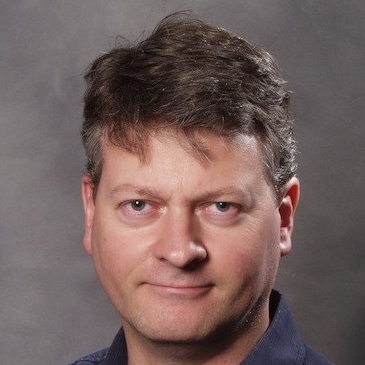
Dr David Lowry, Royal Holloway, University of London, UK

Dr David Lowry, Royal Holloway, University of London, UKDr Lowry has been Reader in Stable Isotopes and Greenhouse Gases at RHUL since 2018, setting up the greenhouse gas laboratory in 1994–5, with a focus on extracting methane from ambient air for isotopic analysis. Research interests include the development of new techniques for stable isotope analysis of greenhouse gases and the use of isotopes to verify UK methane emissions declarations and inventory assessments. Current interests in the use of laser spectroscopy for greenhouse gas measurement, through automated systems at remote sites and by mobile measurement of emission plumes. Lead convenor of greenhouse gas sessions at the AGU Fall meeting 2013 on Arctic CH4 Sources and 2015 on Mobile CH4 Measurement. WP2 leader on the EU-funded 2017–2021 MEMO2 methane training network. Co-ordinator of UN CCAC project on Southern North Sea methane emissions, and partner on UN CCAC cities gas emission project. Current RHUL PI or Co-I on 5 NERC-funded methane projects. |
|---|---|
| 12:15 - 12:30 |
Urban methane emissions
It has been recommended that anthropogenic methane emissions should be reduced 45% by 2030 to slow increasing rates of atmospheric temperature, and to avoid adverse feedbacks of climate warming. Urban methane studies show significant methane emissions attributed to city infrastructure, eg the gas distribution network, unveiling opportunities for mitigating emissions. Extensive mobile surveys conducted in Greater London and Bucharest, Romania between 2018 and 2019 measured street-level methane mole fractions to locate areas where levels were above atmospheric background, known as a leak indicator (LI). LIs were analyzed for C2:C1 ratios and δ13CCH4 for emission source apportionment. London’s leak density was 0.3 LI km-1 and emission factor (EF) was 0.42 L min-1km-1, whereas Bucharest had a leak density of 0.7 LI km-1 and an EF of 1.60 L min-1km-1. Both cities had larger leak densities and an EF larger than other recently surveyed European cities. London and Bucharest had different dominating emission sources, with London emissions mostly from gas pipeline leaks, while Bucharest had a higher proportion of emissions from wastewater. This research will help local governments prioritize methane mitigation strategies to fall in line with the 45% methane reduction target. 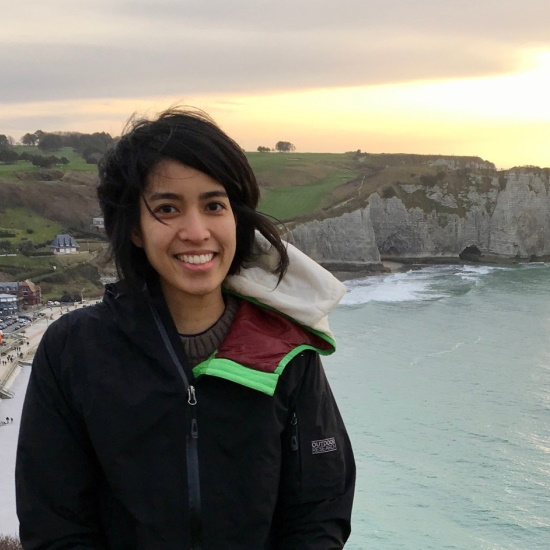
Julianne M Fernandez, Royal Holloway, University of London, UK

Julianne M Fernandez, Royal Holloway, University of London, UKJulianne M Fernandez is a postgraduate research assistant at Royal Holloway University of London, and is finishing up her PhD in the Department of Earth Sciences. Fernandez’s current research focuses on source identification of methane emissions from urban cities using high precision stable isotopic GC-IRMS measurements coupled with mobile measurement techniques. Fernandez’s previous research at the University of Cincinnati centered on surface water methane and nitrous oxide emissions from the North American Great Lake, Lake Erie, where they found that the greatest emissions were sourced from the western basin. |
| 12:30 - 12:45 |
Methane emissions from landfills and biogas facilities: the waste from waste
Methane from waste is primarily of biogenic origin and varies with temperature and production process, resulting in emissions that vary with time of day and year. Furthermore, waste sites now commonly extract and either burn biogas to electricity, or use it directly, and emissions from each component activity producing CH4 can be characterised by their distinct carbon-13 and deuterium isotopic signatures. This study aimed to characterize the carbon isotopic signatures (δ13C-CH4) of several waste categories in the UK, Netherlands and Turkey, and assess CH4 emission rates from UK biogas plants. Both Landfills and Biogas plants are important sources of fugitive methane emissions in the UK and Europe. Emissions from 10 UK biogas plants were estimated using Gaussian plume modelling to be in the range of 0.1 to 58.7 kg CH4 hr-1. Where there are multiple sources, emission plumes can be identified by their isotopic signatures, helping to identify specific sources. The emissions from 26 different biogas plants showed that feedstock differences affect the isotopic signature. For landfills, active sites (open cells) have a more depleted isotopic signature with a lower oxidation proportion than closed sites in the UK. Overall landfill 13C-CH4 results were similar in the UK, Netherlands, and Turkey. 
Dr Semra Bakkaloglu, Imperial College London, UK

Dr Semra Bakkaloglu, Imperial College London, UKSemra Bakkaloglu has been a research associate at Imperial College London since October 2020. She has been working as a part of the Methane and Environment Programme at the Sustainable Gas Institute (SGI), assessing methane and hydrogen emissions from gas supply chains. From 2014–2018, she worked as an environmental process engineer at Turkish Petroleum Refinery, Turkey’s largest industrial company. Semra double majored in Environmental Engineering and Chemical Engineering at Middle East Technical University (METU) (2006–2012). Between 2012 and 2014, she was a Fulbright Scholar at Clemson University, from which she obtained a master’s degree in Environmental Engineering and Earth Science. She completed her PhD at Royal Holloway University of London, a Marie Curie Early-Stage Researcher in the MEMO2 project, a European Training Network H2020 (2018–2021). Her PhD research focused on characterisation and quantification of methane emissions from waste sources in Europe, specifically the UK. |
| 12:45 - 13:00 | Discussion |
| 13:00 - 13:25 |
Quantifying emissions using UAVs: methods and case studies
This talk will review the current state-of-play in unmanned aerial vehicle (drone) measurements of methane and other greenhouse gases. It will discuss the platforms and instrumentation currently available and how drone-based sampling of gas concentrations can be used to derive emissions fluxes at local spatial scales and how to design surveys to capture this. This will be demonstrated by showing results from emission case studies of landfill sites, fracking sites and dairy herds conducted in recent years and how such results may be useful for policy and regulation. 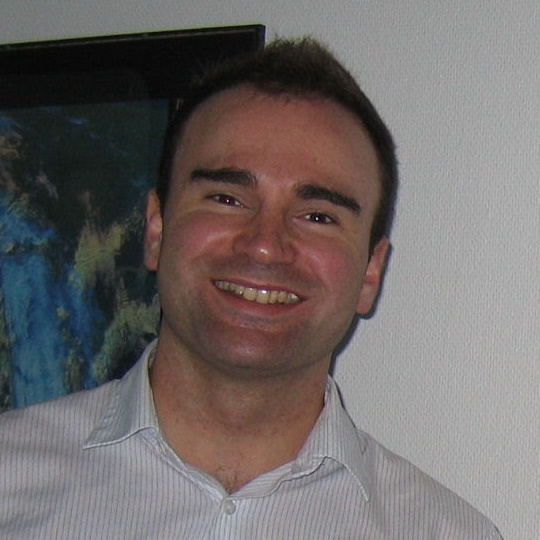
Professor Grant Allen, The University of Manchester, UK

Professor Grant Allen, The University of Manchester, UKGrant Allen is Professor of Atmospheric Physics at the Centre for Atmospheric Science at the University of Manchester. His research interests include the development and use of greenhouse gas emissions quantification methods and models to study emissions from the natural environment and human activity. With over 15 years of fieldwork experience spanning the Arctic, Africa, Australasia and South America, Grant uses research survey aircraft, unmanned aerial vehicles and satellites to study emissions and the processes underpinning them. A specific goal of his research is to validate or challenge estimates of emissions from bottom-up approaches and to characterise and test outputs from natural environment carbon process models. |
| 13:25 - 13:35 | Discussion |
| 13:35 - 14:00 |
Recent advances in understanding fossil fuel industry methane emissions
A decade ago, publicly available empirical data were too scarce to guide industry stakeholders and policy-makers in terms of prioritizing and effectively mitigating fossil fuel related methane emissions. Since then, a vast number of studies have developed and refined methods to provide more robust emissions data across the supply chain and gain insights into the emission mechanisms to explain the atmospheric data. These recent studies have highlighted inconsistencies and low biases in many emission inventories, and they emphasized the contribution of measurements to drive emission reductions. However, more work is needed to (i) fill major data gaps in many world regions, (ii) address supply chain sectors which received little attention so far, and (iii) translate and adopt the scientific methods of empirical data collection at scale in the fossil fuel industries. This presentation will summarize ongoing work to address the three challenges above. It will include the current status and plans of the International Methane Emissions Observatory (IMEO) to conduct measurement studies internationally. Further, it will focus on the currently understudied offshore oil and gas sector. It will close with ongoing work to improve transparent emissions reporting from the fossil fuel industry by incorporating empirically-based estimates and integrating them with independent datasets (satellite data, field studies). 
Dr Stefan Schwietzke, Environmental Defense Fund, Germany

Dr Stefan Schwietzke, Environmental Defense Fund, GermanyDr Stefan Schwietzke is a Senior Scientist at Environmental Defense Fund (EDF) located in Germany. His research focuses on methane emissions from different sources at different scales: from local to global, which requires the application of different analytical methods in terms of measurement platforms and data analysis. One of his main responsibilities includes the scientific coordination of a global set of measurement studies to characterize oil and gas related methane emissions in collaboration with the United Nations Environment Programme. Stefan was previously a research scientist at the National Oceanographic and Atmospheric Administration’s Global Monitoring Division and the University of Colorado’s Cooperative Institute for Research in Environmental Sciences in Boulder, CO. He earned his PhD in Engineering and Public Policy from Carnegie Mellon University, and MS and BS engineering degrees from the University of Stuttgart, Germany. |
| 14:00 - 14:10 | Discussion |
| 14:10 - 14:30 | Break |
Chair

Professor Euan Nisbet, Royal Holloway University of London, UK

Professor Euan Nisbet, Royal Holloway University of London, UK
| 14:30 - 14:55 |
Closing the global budget
Atmospheric methane is the second anthropogenic greenhouse gas after carbon dioxide. With a lifetime around 10 years in the atmosphere and a diversity of emission types, methane is an important target for climate change mitigation. Different approaches are used to estimate methane sources and sinks. Top-down approaches assimilate atmospheric data from a large variety of in-situ and remote-sensed observations from the surface or from space to estimate methane sources and sinks at different scale (from the facility scale to global scale). Bottom-up approaches include inventories of anthropogenic emissions and numerical models able to simulate methane emissions at the surface from freshwater systems for example or the methane sinks through atmospheric chemistry schemes. A large international effort gathers the current knowledge on methane sources and sinks to release regularly updates of the methane budget. However, large uncertainties still remain in the spatio-temporal quantification of methane sources and sinks. An overview of the last synthesis is presented, along with a discussion on the sectors contributing to the recent atmospheric methane increase, and on the limitations and challenges remaining to close the methane budget. 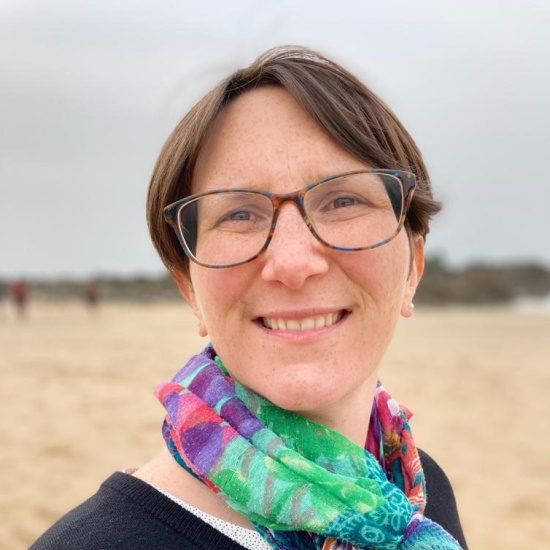
Dr Marielle Saunois, Laboratoire des Sciences du Climat et de l'Environnement, France

Dr Marielle Saunois, Laboratoire des Sciences du Climat et de l'Environnement, FranceMarielle Saunois is an assistant professor at Université de Versailles Saint Quentin associated to the Laboratoire des Sciences du Climat et de l’Environnement since 2011. Her research addresses the assessment of global methane sources and sinks. She works with global chemistry transport models and uses 4D-var inversion systems to constrain the methane cycle using atmospheric observations. She co-leads the Global Methane Budget – methane initiative of the Global Carbon project. Before being hired at LSCE she worked on tropospheric chemistry, including ozone and its precursors, using a chemistry transport model, and in-situ and remote observations at the Laboratoire d’Aérologie and the National Center for Atmospheric Research. |
|---|---|
| 14:55 - 15:05 | Discussion |
| 15:05 - 15:30 |
Mitigation and removal of emissions
Atmospheric methane removal (eg in situ methane oxidation to carbon dioxide) may be needed to offset continued methane release and limit the global warming contribution of this potent greenhouse gas. Because mitigating most anthropogenic emissions of methane is uncertain this century, and sudden methane releases from the Arctic or elsewhere cannot be excluded, technologies for methane removal or oxidation may be required. Carbon dioxide removal (CDR) has an increasingly well-established research agenda and technological foundation. No similar framework exists for methane removal. The authors believe that a research agenda for negative methane emissions – 'removal' or atmospheric methane oxidation – is needed. The authors outline some considerations for such an agenda here, including a proposed Methane Removal Model Intercomparison Project (MR-MIP). They also define a novel metric, the effective cumulative removal, and use it to show that each effective petagram of methane removed causes a mean global surface temperature reduction of 0.21ű0.04°C and a mean global surface ozone reduction of 1.0ű0.2 parts per billion. These results demonstrate the effectiveness of methane removal in delaying warming thresholds and reducing peak temperatures, and also allow for direct comparisons between the impacts of methane and carbon dioxide removal that could guide future research and climate policy. 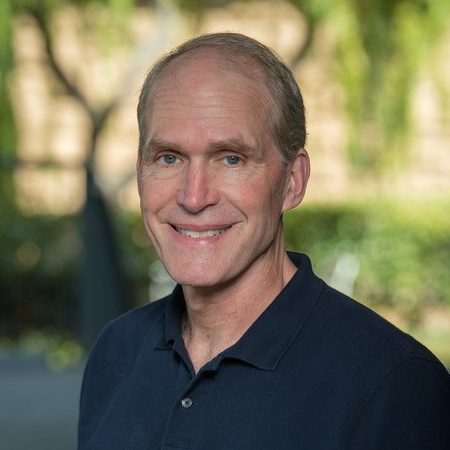
Professor Rob Jackson, Stanford University, USA

Professor Rob Jackson, Stanford University, USARob Jackson is a Professor of Earth System Science at Stanford University and a Senior Fellow in the Precourt Institute for Energy and the Woods Institute for the Environment. He and his Stanford lab examine the many ways people affect the Earth. They're currently examining the effects of climate change, droughts, and fires on forest mortality and grassland ecosystems. They also measure and work to reduce greenhouse gas emissions through the Global Carbon Project (globalcarbonproject.org), which Jackson chairs. An author and photographer, Rob has published a trade book about the environment (The Earth Remains Forever), two books of children’s poems, Animal Mischief and Weekend Mischief, and recent poems in the journals Southwest Review, Cortland Review, LitHub, and more. His photographs have appeared in the NY Times, Washington Post, USA Today, Science, Nature and National Geographic News. Rob is a Guggenheim Fellow and a Fellow in the American Association for the Advancement of Science, American Geophysical Union, and Ecological Society of America. |
| 15:30 - 15:40 | Discussion |
| 15:40 - 16:05 |
Agricultural methane emissions and the potential for mitigation
Agriculture is the largest anthropogenic source of methane (CH4), emitting 145 Tg CH4 y−1 to the atmosphere in 2017. The main sources are enteric fermentation, manure management, rice cultivation and residue burning. There is significant potential to reduce CH4 from these sources, with bottom-up mitigation potentials of ~10.6, 10, 2 and 1 Tg CH4 y−1 from rice management, enteric fermentation, manure management and residue burning. Other system-wide studies have assumed even higher potentials of 4.8 to 47.2 Tg CH4 y-1 from reduced enteric fermentation, and 4 to 36 Tg CH4 y-1 from improved rice management. Biogas (a methane-rich gas mixture generated from anaerobic decomposition of organic matter and used for energy) also has potential to reduce unabated CH4 emissions from animal manures and human waste. In addition to these supply-side measures, interventions on the demand-side (shift to a plant-based diet and a reduction in total food loss and waste by 2050) would also significantly reduce methane emissions, perhaps in the order of >50 Tg CH4 y-1. Despite CH4 being a short-lived greenhouse gas, the urgency of reducing warming means we must reduce any GHG emissions we can as soon as possible. 
Professor Pete Smith FRS, University of Aberdeen, UK

Professor Pete Smith FRS, University of Aberdeen, UKPete Smith is Professor of Soils and Global Change at the Institute of Biological and Environmental Sciences at the University of Aberdeen (Scotland, UK) and Science Director of the Scottish Climate Change Centre of Expertise (ClimateXChange). His interests include climate change mitigation, soils, agriculture, food systems, ecosystem services and modelling. He has been an author on many reports of the Intergovernmental Panel on Climate Change (IPCC) and led its work of climate change mitigation in agriculture, forestry and land for its 4th and 5th Assessment Reports, and led its work interlinkages between land based mitigation options for the IPCC Special Report on Climate Change and Land. He is a Fellow of the Royal Society of Biology, a Fellow of the Institute of Soil Scientists, a Fellow of the Royal Society of Edinburgh, a Foreign Fellow of the Indian National Science Academy, a Fellow of the European Science Academy, and a Fellow of the Royal Society (London). |
| 16:05 - 16:15 | Discussion |
| 16:15 - 16:40 |
How much do methane emission reductions contribute towards meeting the Paris Agreement temperature goal?
Meeting the Paris Agreement temperature goal necessitates limiting methane-induced warming, in addition to achieving net-zero or (net-negative) carbon dioxide (CO2) emissions. In the median 1.5°C scenario (based on IAM pathways contributing to the IPCC Special Report on Warming of 1.5°C) assessed between 2020 and 2050, methane mitigation lowers temperatures by 0.1°C; CO2 increases it by 0.2°C. CO2 emissions continue increasing global mean temperature until net-zero emissions are reached, with some warming reversal once negative emissions are achieved. In contrast, reducing methane emissions starts to reverse methane-induced warming within a few decades. These differences are hidden when framing climate mitigation using annual ‘CO2-equivalent’ emissions, including targets based on aggregated annual emission rates. Dr Cain shows how this insight can be accurately incorporated to estimate warming by using ‘warming-equivalent emissions’, which provide a transparent and convenient method which can inform policies and measures for mitigation, or demonstrate progress towards a temperature goal. The method presented (GWP*) uses well-established climate science concepts to relate GWP100 to temperature, as a simple proxy for a climate model. 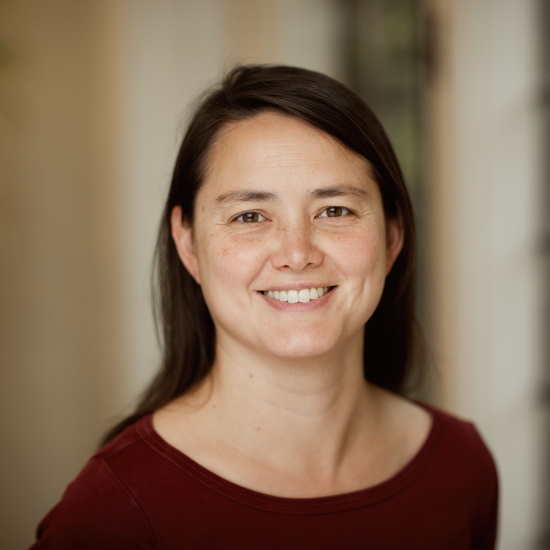
Dr Michelle Cain, Cranfield University, UK

Dr Michelle Cain, Cranfield University, UKDr Michelle Cain is a lecturer at the Centre for Environmental and Agricultural Informatics at Cranfield University, UK. Her research focuses on the role of non-CO2 greenhouse gases in limiting global warming, consistent with the Paris Agreement’s temperature goal. In particular, how much of a role methane and nitrous oxide can play in climate mitigation, using simplified methods and metrics which are more widely accessible than climate models. Before joining Cranfield in 2020, Dr Cain was a senior researcher at the University of Oxford, developing greenhouse gas emission metrics for policy applications as part of the Oxford Martin Programme on Climate Pollutants. There, she held knowledge exchange fellowships to work with the agricultural sector. Michelle obtained her PhD in meteorology from the University of Reading, before working as a postdoctoral researcher at the University of Cambridge, focusing on linking airborne methane measurements to their sources using inverse modelling techniques. |
| 16:40 - 16:50 | Discussion |
